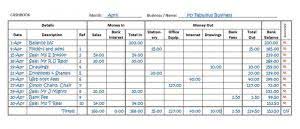
Unlike fixed assets, current assets are not depreciable, which means they won’t lose value over the course of time. Subsequently, current assets will be sold or moved to make a profit or take a loss, depending on the price set by the market. For investors, firms with high return on assets (ROA) ratios signify a buy and a trusted source of income as, most of the times, these firms, distribute dividends as well. However, as firms depreciate their non-current assets, financial analysts should carefully review the financial statements to make sure how the numbers are determined. Companies purchase non-current assets – resources that provide positive economic benefits – to generate revenue as part of their core operations. You don’t want to have a massive bump in the value of your assets one year, only to have it drop suddenly the next, setting off the balance of your book value.
Companies usually report their non-current assets as property, plant and equipment on the balance sheet. Yet, as assets lose value as time progresses, companies also report the depreciation and amortization expenses. Regardless of their physical form, the assets of a company must be accurately valued so that investors and financial analysts can properly assess the intrinsic value of the company. Many organizations implement a policy for tangible asset expenditures which sets a materiality threshold over which purchases will be capitalized.
What are the Main Types of Assets?
That said, all assets are the same in that they have financial value to a business (or individual). Fixed Assets are resources expected to provide long-term economic benefits that are expected to be fully realized by the company across more than twelve months. 5 years divided by the sum of the years’ digits of 15 calculates to 33.33% which will be used to calculate depreciation expense. The depreciable base is the cost minus the salvage value of the asset. The asset’s cost is $20,000 and the salvage value is $4,000 which calculates to a depreciable base of $16,000. You could get a loan even when the proposed loan EMI and your existing obligations add up 50-60% of your net monthly income.
- With a little bit of time, however, many businesses are able to grow to the point of stability and profit.
- Please note, Depreciation in the Balance sheet is referred to as the Accumulated depreciation.
- Company ABC is a construction company that plans to purchase a second building for $15 million.
- The IRS decides the rate that different types of assets depreciate.
- Unlike current assets, non-current assets are typically illiquid and cannot be converted into cash within twelve months.
Note, the term ‘Accumulated’ is used to indicate all the depreciation value since its incorporation. Over 1.8 million professionals use CFI to learn accounting, financial analysis, modeling and more. Start with a free account to explore 20+ always-free courses and hundreds of finance templates and cheat sheets. The strategies discussed are strictly for illustrative and educational purposes and are not a recommendation, offer or solicitation to buy or sell any securities or to adopt any investment strategy. There is no guarantee that any strategies discussed will be effective.
Total fixed assets vs. net fixed assets
The difference between these two types of investments is that tangible assets have a physical existence while intangible assets have no physical presence. It is essential to note that fixed assets are vital in any organization since they assist them in making profits. Examples of tangible fixed assets include machinery, inventory, and equipment. When filing the annual accounts for a company, tangible fixed assets must be included since they have a market value. Some of these assets will depreciate, and they need to be included in accounts for this reason. Each company makes its balance sheet statement that contains shareholders’ equity, assets, and liabilities.

In the balance sheet, fixed assets are normally reported at net book value or costs net of accumulated depreciation. For instance, if you sold your building, it would take weeks or months to find a buyer, have their financing and paperwork processed, and close on the fixed assets examples sale. Additionally, fixed assets have a significant impact on the business. They often take a sizable investment to acquire and are intended to be used over a long period of time. There are two main types of fixed assets, and they are tangible and intangible assets.
What is Fixed Assets Ratio?
The journal entry to record a disposal includes removing the book value of the fixed asset and its related accumulated amortization from the general ledger (and subledger). Home Loan – It is a good loan as it helps you buy an asset that can generate regular income for you if you put it on rent. Also when you sell it to someone, you could get a considerable value as real estate prices will most likely rise over time. While principal repayments offer a maximum tax savings of INR 1.5 lakh, the interest payments allow tax savings upto INR 2 lakh in a financial year. And when you put it on rent, there will be no limit on tax deductions on interest payments. Although the list above consists of examples of fixed assets, they aren’t necessarily universal to all companies.
- In the balance sheet, fixed assets are normally reported at net book value or costs net of accumulated depreciation.
- For investors, firms with high return on assets (ROA) ratios signify a buy and a trusted source of income as, most of the times, these firms, distribute dividends as well.
- This type of cost is included in the depreciable cost of the asset.
- There is an international movement to standardize accounting and reporting, particularly for global companies.
- It helps to determine the capacity of a company to discharge its obligations towards long-term lenders indicating its financial strength and ensuring its long-term survival.
- A formula is used when calculating net fixed assets, according to My Accounting Course.
- These include the construction, farming, transportation and fishing industries.
